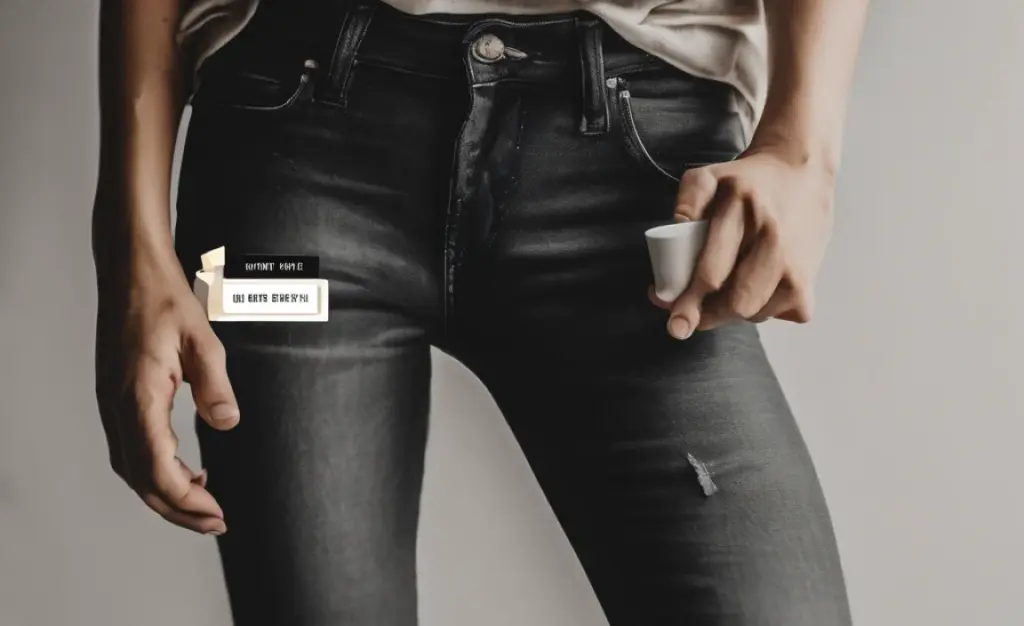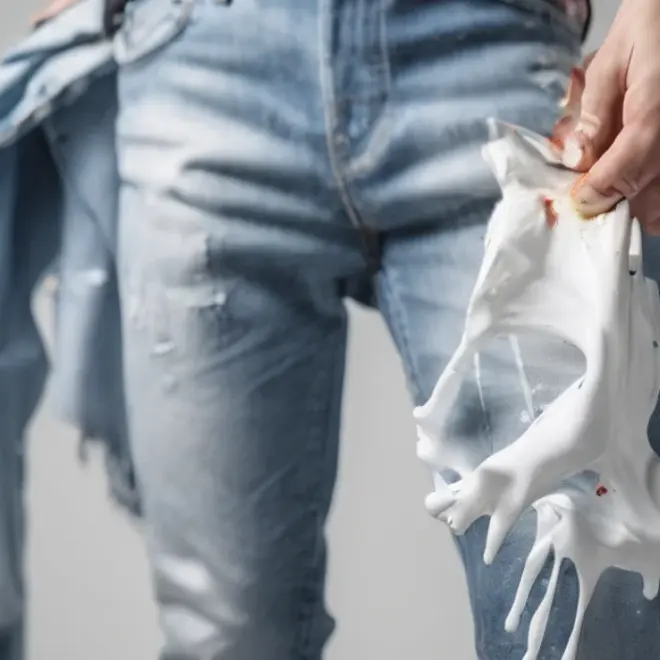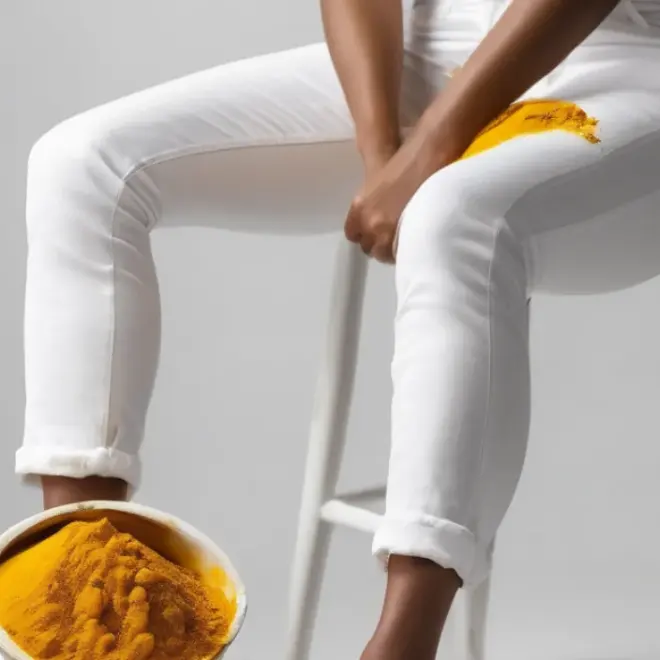Removing coffee from black jeans is simple! Act fast with cold water and mild detergent. For set-in stains, a gentle stain remover or a mixture of white vinegar and water can lift the mark without fading your dark denim. Always test in an inconspicuous area first.
Spilled coffee on your favorite black jeans can feel like a fashion disaster, especially when you’re on the go. Those brown rings can be stubborn, and the thought of damaging the deep color of your denim adds to the worry. But don’t fret! With the right approach, you can tackle those coffee stains effectively and keep your black jeans looking as good as new. This guide will walk you through simple, reliable methods that work, ensuring you can enjoy your coffee without the wardrobe anxiety.
We’ll cover everything from immediate spill responses to tackling older, set-in stains. You’ll learn which household items are your allies and how to use them safely on your dark denim. By the end, you’ll feel confident in your ability to rescue your black jeans from any coffee-related mishap.
Understanding Coffee Stains on Black Jeans
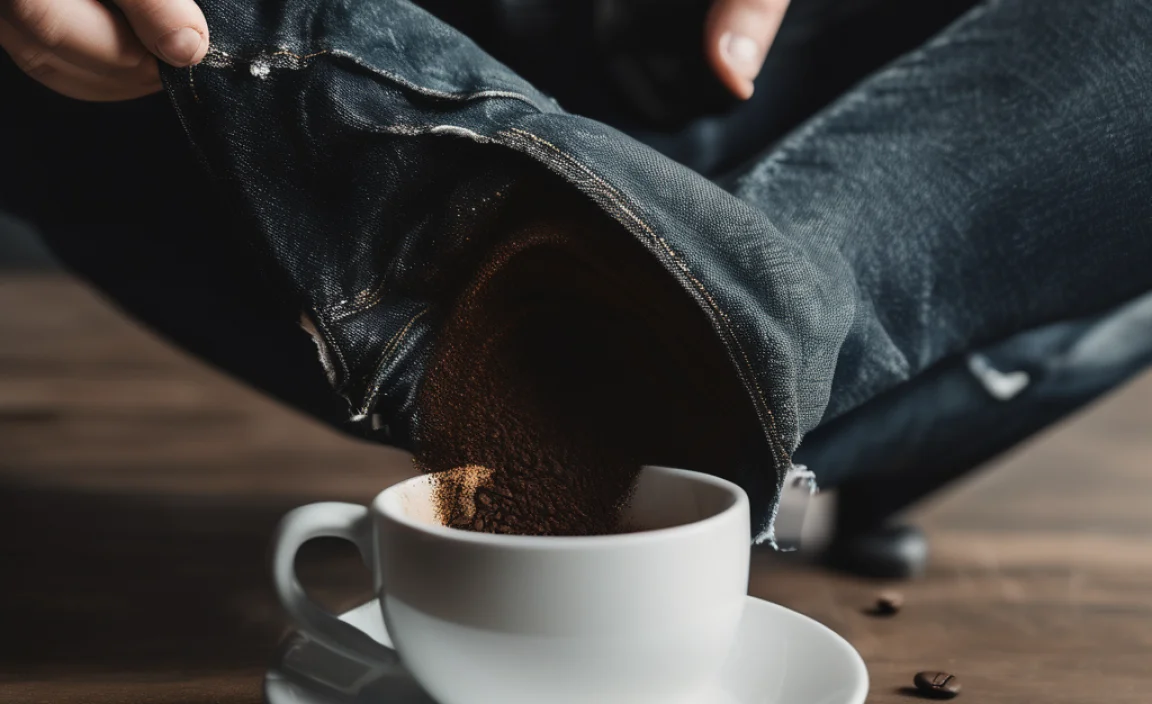
Coffee is a notoriously tricky stain because of its natural tannins and oils. When it hits fabric, these components can bind with the fibers, making removal challenging. On black jeans, the contrast of a light-colored coffee stain can be quite noticeable, making prompt action crucial. The dye in black denim is designed to be colorfast, but harsh chemicals or aggressive scrubbing can sometimes lead to fading or even a change in the fabric’s texture. Therefore, the goal is to lift the stain gently while preserving the rich black hue of your jeans.
The key to success lies in understanding the stain’s nature and the best way to break it down without damaging the fabric. This usually involves working with the stain, not against it, and employing solutions that are effective yet mild.
Immediate Action: The First Few Minutes Matter
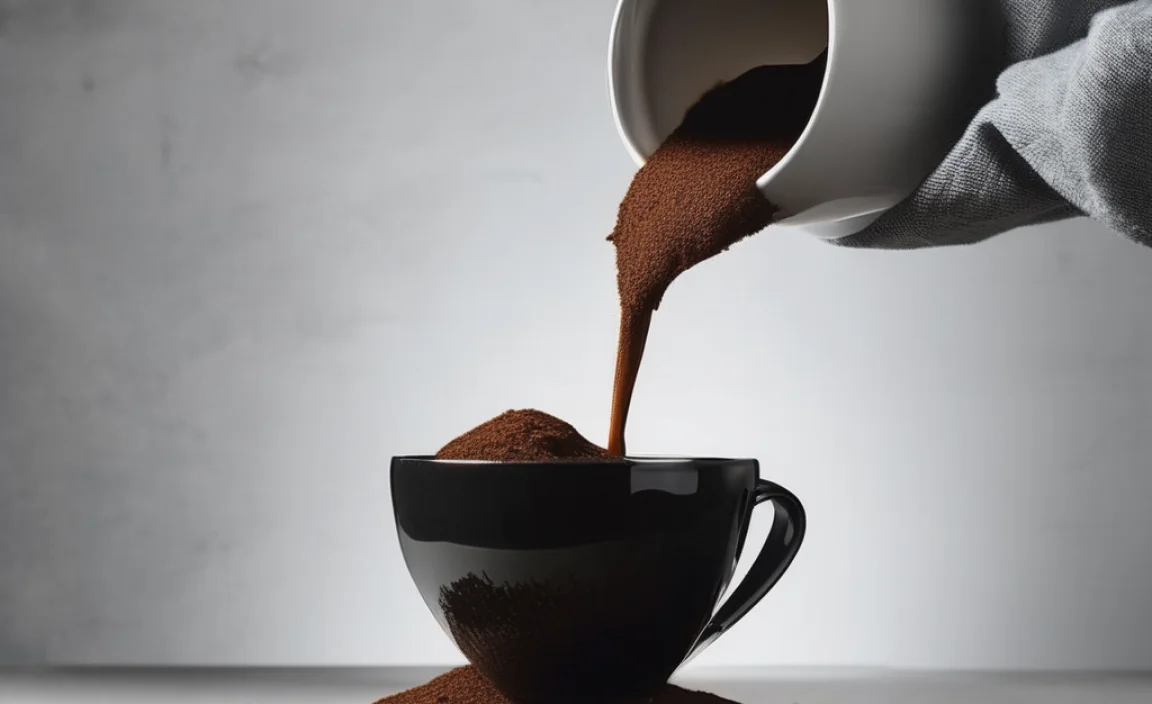
When coffee first splashes onto your black jeans, your immediate reaction can make a significant difference. The longer the coffee sits, the deeper it will penetrate the denim fibers, and the harder it will be to remove.
The Blotting Technique
The very first step should always be blotting. Avoid rubbing, as this can spread the stain and push it further into the fabric.
- Fetch a clean cloth or paper towel: Grab the nearest clean, absorbent material.
- Blot gently: Press the cloth onto the spill to soak up as much liquid as possible.
- Work from the outside in: If the spill is widespread, start blotting at the edges of the stain and move towards the center. This helps prevent the stain from spreading.
- Repeat: Continue blotting with fresh sections of the cloth or new paper towels until no more coffee is being absorbed.
Cold Water Rinse
After blotting, flushing the area with cold water is the next critical step. Hot water can set protein-based stains, and while coffee isn’t strictly protein, cold water is generally safer for stain removal and won’t risk setting any components of the coffee.
Here’s how:
- Turn the jeans inside out: This allows you to flush the stain from the back of the fabric, pushing it away from the fibers rather than deeper into them.
- Run cold water through the stain: Hold the stained area under a cold tap. Let the water flow through the fabric for a few minutes.
- Continue blotting: As you rinse, you can also gently blot the area with a clean cloth to help lift the stain.
Tackling Fresh Stains: Simple Household Solutions

If you’ve acted quickly, a fresh coffee stain might be removable with common household items. These methods are best for spills that haven’t had time to dry completely.
Method 1: Mild Dish Soap or Laundry Detergent
A gentle liquid dish soap or a small amount of liquid laundry detergent can effectively break down the oils and pigments in coffee.
- Mix a solution: Combine a few drops of mild liquid dish soap or laundry detergent with cool water.
- Apply to the stain: Dab the solution onto the coffee stain using a clean cloth or sponge. Work it gently into the fabric.
- Let it sit: Allow the solution to sit on the stain for about 5-10 minutes.
- Rinse thoroughly: Rinse the area with cool water.
- Check and repeat: See if the stain is gone. If not, you can repeat the process.
For this method, a good quality liquid laundry detergent specifically designed for darks can be especially helpful. Brands that offer pH-neutral formulas often contain fewer harsh chemicals that could strip color.
Method 2: White Vinegar Solution
White vinegar is a natural stain remover and deodorizer that can tackle tannins in coffee. Its mild acidity helps to break down the stain without typically damaging fabric dyes.
How to use it:
- Create the mixture: Mix equal parts white vinegar and cool water.
- Test first: Apply a small amount of the mixture to an inconspicuous area of the jeans (like an inside seam) to ensure it doesn’t affect the color. Wait a few minutes and check for any fading before proceeding.
- Apply to the stain: Lightly dampen a clean cloth with the vinegar-water solution and gently blot the coffee stain.
- Let it work: Allow the solution to penetrate the stain for about 10-15 minutes.
- Rinse: Rinse the treated area thoroughly with cool water.
- Wash as usual: Proceed to launder the jeans as you normally would.
White vinegar can be a lifesaver for many common stains. You can learn more about its versatile cleaning applications on sites like the U.S. Environmental Protection Agency’s resources on greener cleaning.
Dealing with Set-In or Dried Coffee Stains

Dried coffee stains are tougher because the liquid has evaporated, leaving the concentrated pigments and oils bonded to the fabric. These often require a bit more patience and sometimes a stronger, yet still fabric-safe, approach.
Method 3: Baking Soda Paste
Baking soda is a mild abrasive and an alkali that can help lift stains from fabric. When made into a paste, it can cling to the stain and draw it out.
- Make the paste: Mix baking soda with a small amount of water to create a thick paste.
- Apply generously: Spread the paste over the dried coffee stain, ensuring it’s completely covered.
- Let it dry: Allow the paste to dry completely on the stain. This can take several hours. The drying process helps the baking soda absorb the stain.
- Brush away: Once dry, gently brush off the hardened paste with a soft brush or cloth.
- Rinse and launder: Rinse the treated area with cool water and then wash the jeans as usual.
Method 4: Commercial Stain Removers
For stubborn stains, a commercial stain remover can be very effective. It’s important to choose one that is safe for dark fabrics.
When selecting a stain remover:
- Check the label: Look for products specifically designed for fabric stains and suitable for all colors, or even specifically for darks.
- Read instructions carefully: Follow the product’s usage instructions precisely.
- Perform a patch test: Always test the product on an inside seam or hidden area of the jeans first to ensure it doesn’t cause discoloration.
- Apply and wait: Apply the stain remover directly to the stain and let it sit for the recommended time.
- Rinse and wash: Rinse thoroughly and then wash the jeans.
Some popular and effective stain removers include OxiClean (which uses sodium percarbonate to lift stains), Resolve, or Shout. Ensure the formula you choose is suitable for denim and dark colors.
Method 5: Hydrogen Peroxide (Use with Caution)
Hydrogen peroxide is a mild bleaching agent and can be effective on stains. However, it can also lighten darker fabrics, so it must be used with extreme caution on black jeans.
- Dilute heavily: Mix one part standard 3% hydrogen peroxide with ten parts cool water.
- Test extensively: Apply a tiny amount of the diluted solution to a very inconspicuous area of the jeans. Wait at least 30 minutes to confirm there is no color change.
- Apply sparingly: If the test is successful, use a cotton swab or clean cloth to dab the diluted solution only onto the coffee stain. Avoid getting it on surrounding fabric.
- Let it sit briefly: Allow it to work for no more than 5-10 minutes.
- Rinse immediately and thoroughly: Rinse the treated area with copious amounts of cool water.
- Wash: Wash the jeans immediately afterward.
Given the risk, this method is generally a last resort for black jeans. If your jeans are a deep, saturated black, the risk of lightening is higher.
Washing and Drying Your Black Jeans After Treatment

Once you’ve treated the stain and are ready to wash your jeans, follow these best practices to maintain their color and integrity.
Pre-Wash Check
Before you even put the jeans in the washing machine, double-check the stained area. Is the stain completely gone? If any trace remains, it might reappear or set further during the washing and drying process.
- Inspect under good light: Look at the spot in natural daylight if possible.
- Re-treat if necessary: If the stain is still visible, repeat the appropriate treatment method before washing.
Washing Instructions
To keep your black jeans their darkest shade:
- Turn them inside out: This protects the outer surface and color from friction in the wash.
- Wash with dark colors only: Never wash black jeans with whites or lighter colors, even on a separate load.
- Use cold water: Always opt for a cold water setting. Hot water can cause dye to bleed.
- Use a gentle cycle: A delicate or gentle cycle minimizes agitation.
- Choose a dark-wash detergent: Consider using a detergent specifically formulated for dark clothing. These often contain agents that help preserve color. Websites like The American Cleaning Institute offer insights into different detergent types.
Drying Tips
The dryer can be harsh on dark denim, especially with heat.
- Air dry is best: The safest way to dry black jeans and prevent fading is to air dry them.
- Hang them inside out: Hang them on a clothesline or drying rack away from direct sunlight, which can fade colors.
- Avoid high heat if using a dryer: If you must use a dryer, select the lowest heat setting or an air-only cycle. Remove them while still slightly damp to prevent over-drying and potential shrinkage.
Preventative Measures: Coffee and Black Jeans
While accidents happen, a few simple habits can minimize the risk of coffee stains on your black jeans.
- Be mindful of your mug: When drinking coffee, try to hold your mug away from your lap, especially when sitting or dressing.
- Use holders or coasters: If you place your coffee down, ensure it’s on a stable surface, away from traffic areas.
- Consider a travel mug with a secure lid: If you’re out and about, a well-sealed travel mug is your best defense.
- Wear an apron: When enjoying coffee at home, especially if lounging casually, wearing a simple apron can be an effective barrier.
Summary of Stain Removal Methods
Here’s a quick overview of the different methods we’ve discussed, along with their best-use scenarios:
| Method | Best For | Pros | Cons |
|---|---|---|---|
| Cold Water & Blotting | Immediate spills (within minutes) | Quick, accessible, preserves fabric | Only effective if done instantly |
| Mild Dish Soap/Detergent | Fresh spills (within an hour or two) | Gentle, readily available, effective on oils | May require multiple applications for tough stains |
| White Vinegar Solution | Fresh to moderately fresh stains | Natural, good for tannins, deodorizing | Requires a patch test, scent can linger if not rinsed well |
| Baking Soda Paste | Dried or set-in stains | Mild abrasive, draws out stains, inexpensive | Can be messy, requires significant drying time |
| Commercial Stain Removers | Stubborn or old stains | Often very effective, formulated for specific stains | Can be harsh, risk of color damage if not used correctly, cost |
| Hydrogen Peroxide (Diluted) | Very stubborn stains as a last resort | Effective stain lifter | HIGH RISK of bleaching/fading black fabric; extreme caution needed. |
Frequently Asked Questions
Q1: Will coffee stains permanently damage my black jeans?
Not usually, especially if you treat them quickly. The pigments can bind to the fibers, but with the right cleaning agents and techniques, they can be lifted. The main risk comes from using harsh chemicals incorrectly or scrubbing too aggressively, which can damage the fabric or its color.
Q2: Can I use bleach on coffee stains on black jeans?
No, you should never use chlorine bleach on black jeans. Bleach will strip the color, leaving a noticeable white or discolored mark. Only very carefully diluted hydrogen peroxide might be considered as a last resort, but standard household bleach is out of the question.
Q3: How long should I let the stain remover sit on the jeans?
This depends on the product and the stain’s age. For fresh stains with dish soap or vinegar, 5-15 minutes is usually sufficient. For commercial stain removers, always follow the product’s specific instructions, which might range from a few minutes to several hours.
Q4: Is it safe to use hot water to remove coffee stains?
It’s generally recommended to use cold water for coffee stains on black jeans. Hot water can sometimes set stains, particularly those containing sugars or milk, and it can also encourage dye to release from the fabric, leading to fading.
Q5: My coffee stain has been on my black jeans for days. Can I still remove it?
Yes, you likely can. Set-in stains require more patience. Start with gentler methods like baking soda paste or a dedicated commercial stain remover designed for tough stains. You might need to repeat the treatment process multiple times.
Q6: Can I use colored coffee creamers or sweetened coffee?
Yes, creamers and sugar can sometimes make coffee stains harder to remove because they add fats, proteins, and sugars. Treat these stains as you would any other coffee stain, but be aware that the extra components might require a slightly more robust cleaning agent, like a mild dish soap known for grease-cutting power.
Conclusion
Dealing with a coffee spill on your black jeans doesn’t have to be a cause for panic. By acting quickly with blotting and cold water, and then employing gentle, effective household solutions like mild detergent or white vinegar, you can often resolve the issue before it becomes a problem. For those more stubborn, dried-on stains, methods such as baking soda paste or targeted commercial stain removers can be your next best bet. Remember to always test any cleaning solution on an inconspicuous area first to protect your jeans’ color. By following these steps and washing your jeans with care – inside out, in cold water, with darks – you’ll ensure your black denim stays vibrant and stain-free, ready for whatever your day throws at you.


